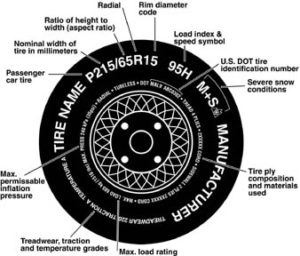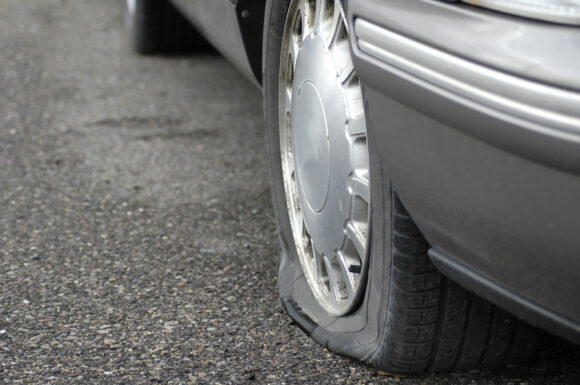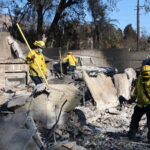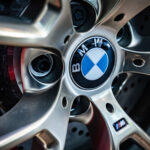An estimate by the National Safety Council suggests there could be as many as 439 deaths and an additional 50,500 serious injuries from auto crashes during the three-day Memorial Day holiday period. With more than 38 million Americans expected to take road trips this year, according to the American Automobile Association, tire blowouts are inevitable. It’s expected to be the second-highest Memorial Day travel volume on record.
“Americans are eagerly awaiting the start of summer and are ready to travel in numbers not seen in more than a decade,” said Marshall Doney, AAA President and CEO. “The great American road trip is officially back thanks to low gas prices, and millions of people from coast to coast are ready to kick off summer with a Memorial Day getaway.”
AAA expects to rescue more than 350,000 motorists during the Memorial Day holiday travel period, mostly due to dead batteries, lockouts and flat tires. An estimated 11,000 crashes and 200 deaths a year occur due to tire failures, according to the National Highway Traffic Safety Administration.

The most common cause of failure includes tread separations, blowouts, bald tires and under inflated tires. Under inflated tires and worn tires are a major cause of failure.
Under-inflation can also cause problems with steering and create longer stopping distances. An Allstate Blog on the subject suggests rocks, nails, metal shards, glass and potholes can also cause flats.
Tires can also be affected by extreme weather, hot weather can cause the air inside tires to expand and lead to a blowout in well-worn wheels.
In 2007, two Federal Motor Vehicle Safety Standards when into effect: tire pressure monitoring systems were required in all light vehicles and tire performance requirements were updated for passenger car and light truck radial tires.
According to Chris Hayes, a Travelers Risk Control team member, there are three sounds associated with a tire blowout. A loud boom or bang is the result of a tire exploding/popping. A whooshing sound is likely the result of air releasing quickly from the tire and a flapping noise means the tire has deflated completely.
He explains, on the insurer’s website, that a tire blowout may feel differently depending upon the situation and that it may only take a quarter of a second before controlling the vehicle becomes a struggle. The vehicle may pull to one side or the other, depending on which tire experienced the blowout. A front tire blowout will most likely be felt in the steering of the vehicle, said Hayes, whereas a back tire will be felt in the seat or body of the vehicle. Either way, a driver’s response should be the same.
According to the National Safety Council, a driver that experiences a tire blowout should consider these tips:
- Grip the steering wheel firmly in both hands.
- Don’t brake first, take foot off of the gas pedal and let the car slow down gradually.
- Turn hazards on.
- Change lanes slowly to get to the shoulder.
An alternative to regular tires are run flat tires. According to Ronald Montoya, senior consumer advice editor for Edmunds.com, run flat tires allow a driver to drive on a flat surface for about 100 miles. According to Edmunds data cited in Montoya’s July 2014 article on the subject, about 12 percent of new vehicles are equipped with run flat tires.
Nearly all new Cadillac and BMW vehicles come with them. Run flat tires also make it easier to steer a car after a flat, Montoya said. There are downsides to them. They tend to wear out more quickly, are more expensive to replace and there is no spare tire.
To help raise awareness of the importance of safe tires and to coincide with National Tire Safety Week, which runs May 29 through June 4, the California Office of Traffic Safety is encouraging drivers to make sure their vehicle tires meet safe driving standards.
According to the Allstate Blog, the NHTSA gets about 20 tire recalls per year so the insurer recommended checking for tire recalls on the safety agency’s website at http://www-odi.nhtsa.dot.gov/owners/SearchSafetyIssues?prodType=T.
Was this article valuable?
Here are more articles you may enjoy.


 State Farm Has Paid $2.5 Billion in Claims for LA Wildfires
State Farm Has Paid $2.5 Billion in Claims for LA Wildfires  New Fire Maps Put Nearly 4M Californians in Hazardous Zones
New Fire Maps Put Nearly 4M Californians in Hazardous Zones  Alibaba Teams up With BMW to Develop AI for Cars in China
Alibaba Teams up With BMW to Develop AI for Cars in China  Tesla Showroom Strikes, Vandalism Sparked by Fury Against Musk
Tesla Showroom Strikes, Vandalism Sparked by Fury Against Musk 